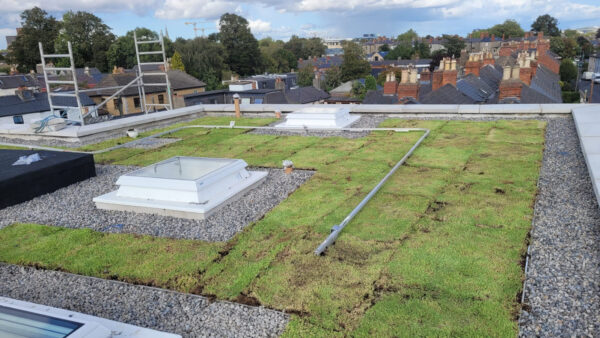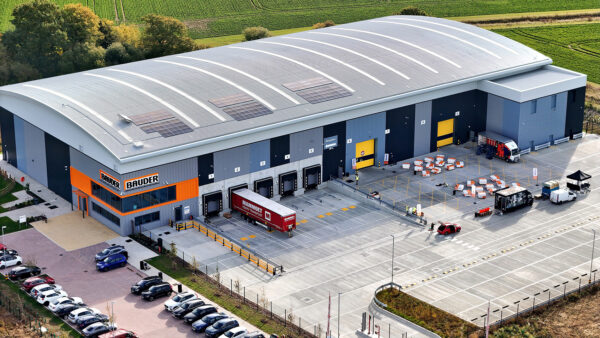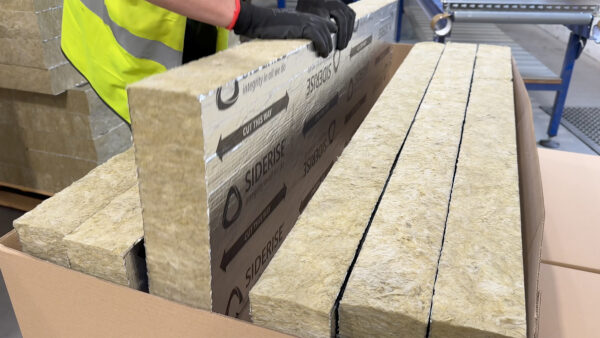
The construction industry has a responsibility to play its part in mitigating habitat destruction, says Adam Cane.
Biodiversity is under threat in the UK. The UK has lost more natural wildlife and wild spaces due to human activity than any other G7 country, according to a recent Royal Society for the Protection of Birds (RSPB) report. Owing to its unique position at the forefront of this issue, the construction industry has a responsibility to play its part in mitigating habitat destruction.

The Intergovernmental Panel on Climate Change’s (IPCC) recent landmark report has highlighted critical levels of concern over the loss of natural habitats, where rising temperatures are set to have alarming and irreversible consequences. Worryingly, the UK has the 12th worst record, globally, when it comes to wildlife and wild space destruction.
It serves as a stark reminder that action is needed across the world, including here in Britain, to combat the damaging impact of climate change.
The built environment has had a significant impact on biodiversity loss. Land use and construction practices contribute to the removal of natural habitats, causing fragmentation. This affects the diversity of individual species, genetic diversity and prevents migration and the occupation of a wider range of habitats. The construction industry needs to reflect on how it can help mitigate climate change and protect biodiversity in the built environment.
The scale of habitat destruction
It is worth highlighting how urgently this issue needs to be addressed. Statistics from the National Biodiversity Network (NBN) State of Nature report in 2019 found that more species are decreasing (41%) than increasing (26%) over the last 50 years. The fate of hedgehogs is a visceral example of this. Since 2000, their numbers have halved, according to a report in 2019, with rough estimates suggesting the population has dropped from 30 million to one million since the 1950s.
Tree coverage is also declining. According to a 2017 report, only 13% of the UK’s total land area is covered in trees. In comparison, the EU’s coverage is 35%, indicating the issues facing the UK and the impact the built environment has on wildlife. The UK has also seen a 90% drop in lowland ponds on farmland since the 20th century.
Construction can make a difference
In spite of the challenges, the construction industry is in a unique position to make a difference.
On a macro-level, blue and green infrastructure can help to create resilient systems for biodiversity that mitigate the impact of rising temperatures, by creating a cooling effect through shading and evaporation. Street trees, pocket parks, public and private gardens, and urban greening can all play a crucial role in creating recovery networks across urban areas.

Even on an individual project-by-project basis, there are measures that can be taken to significantly boost environmental credentials. From a water management perspective, SuDS (sustainable drainage systems) are designed to mimic natural drainage processes.
By incorporating green roofs, living green walls and water-sensitive urban design principles, SuDS can play an integral role in creating sustainable and climate-resilient buildings. Designed in the right way, a variety of vegetated species and habitat types can interconnect to support an abundance of biodiversity.
This extends to road infrastructure too, which has contributed to the decline of hedgehogs, as well as a number of other smaller mammals and amphibians. The highways industry needs to ensure safe passage for animals across the UK road network, with systems such as ACO’s wildlife tunnels designed to do just that, without impacting on the primary function of highways.
Legislative considerations
The UK’s long-awaited Environment Bill, which is due to come into force in the coming months, will put environmental principles into law. The bill will set a legally binding target on species abundance to boost biodiversity, protect peatlands and create new woodlands. As part of the proposed bill, biodiversity net gain (BNG) must be measured using a recognised biodiversity metric.
Implementing BNGs will help to deliver measurable improvements in projects, by creating or enhancing habitats in association with built environment assets. To support planners in understanding potential BNGs, Natural England launched its Biodiversity Metric 3.0 in July. The toolkit can be used by any development project, consenting body or landowner that needs to calculate biodiversity net gain in England.
However, sufficient accountability measures are needed to ensure long-term planning is in place. ‘Built habitat’ mapping should be recorded in the same way that species are. This information – overlaid with observation of biodiversity data – will help to outline the effectiveness of the built habitat over time, ultimately providing greater transparency over how effectively a project is addressing habitat issues.
COP26, the UN’s climate change conference held in Glasgow this year (31 October to 12 November), is another significant event that will hopefully result in further biodiversity legislation. As such, we can expect added pressure on the construction industry to ensure biodiversity protection is implemented in future projects.
Adam Cane is sustainability lead at ACO Water Management.
Taking action

With the changes expected to take centre stage over the coming months, it’s important for the sector to take steps into an environmentally sustainable future.
To support the construction industry, ACO collaborated with 60 partners and supporters to launch a new campaign which aims to explore the challenges we face in safeguarding habitats.
Habitat Matters is a series of on-demand webinars and podcasts that look at how we can create, maintain and improve natural habitat in the built environment.
The series discusses the way in which the construction industry can better protect biodiversity and habitats in the UK, highlighting how we can integrate natural and manmade habitats into projects.
The series of webinars features a number of industry leaders, government representatives and partner organisations, discussing a variety of projects, including environmental policies and guidance, natural solutions and how the public can engage in biodiversity conversation.
To look at the back catalogue of Habitat Matters webinars free on demand, please visit: www.habitat-matters.com
This article has been produced by Construction Manager in association with ACO Water Management











